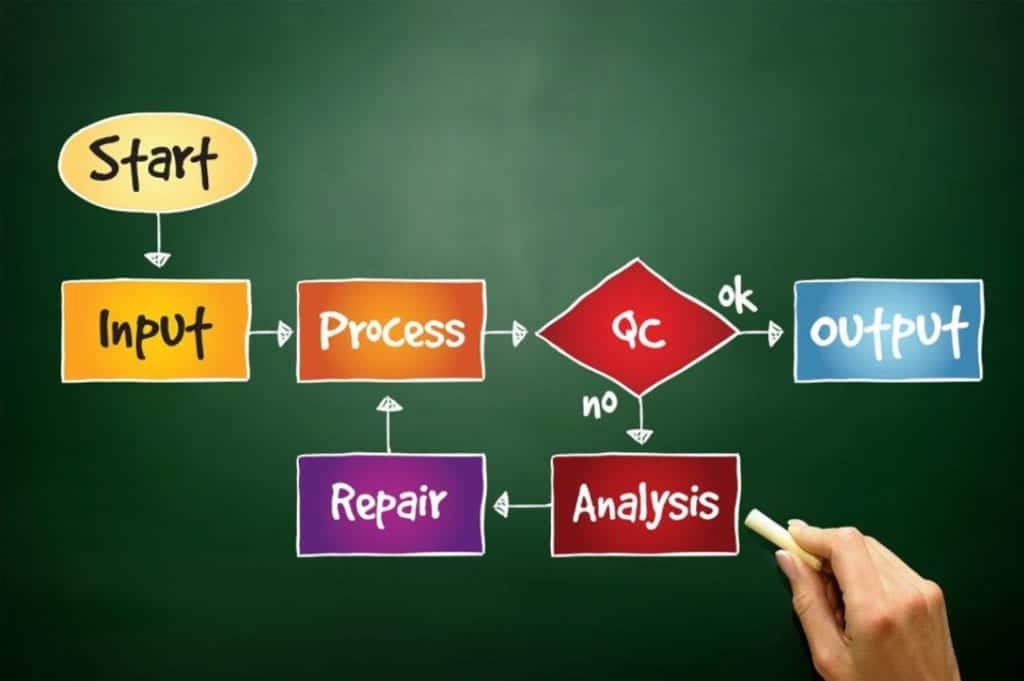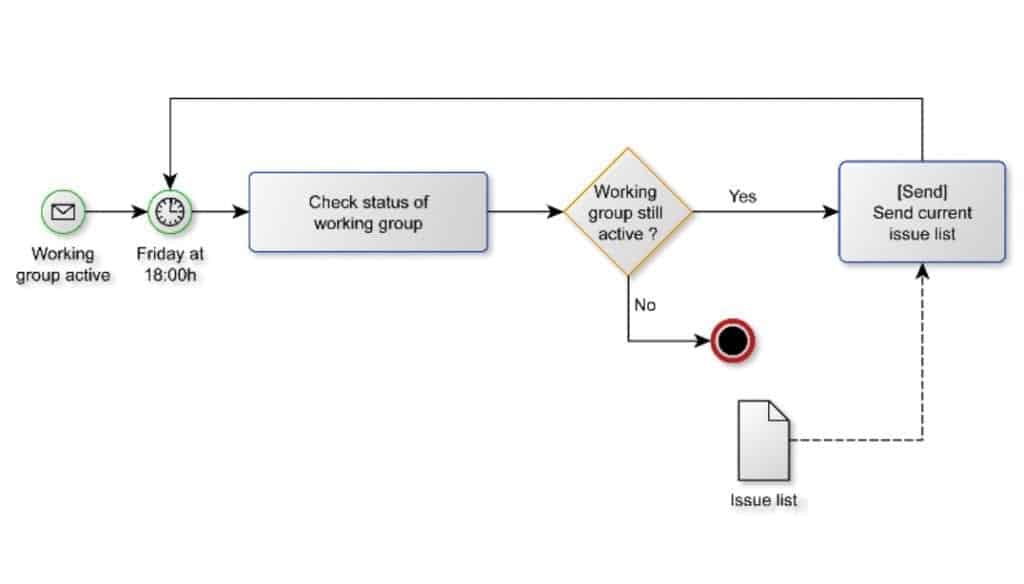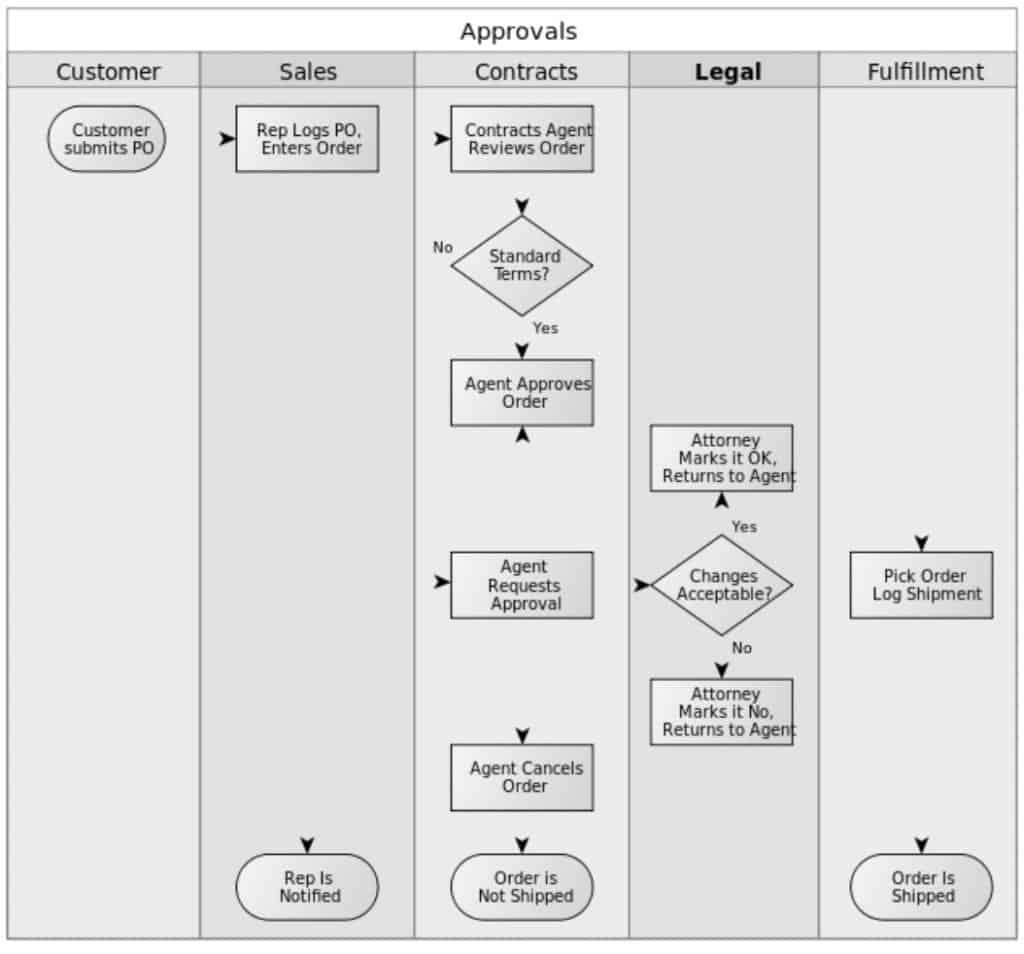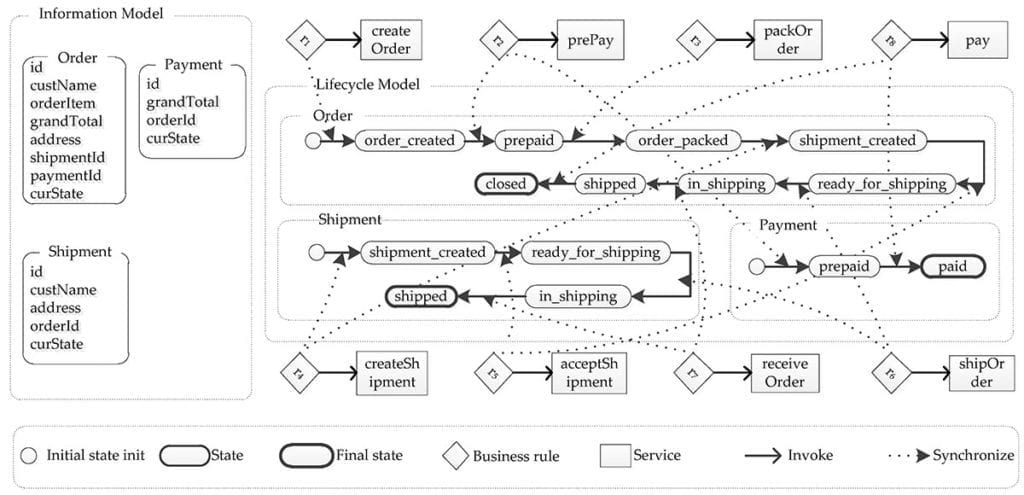[vc_row][vc_column][vc_column_text]
What is Business Process Modeling?
Business Process Modeling is a method of process management. Companies use this method to map out the various processes that make their organization run. A group of people identify and sketch a schematic representation of the steps to complete one cycle of a given business process. This group is made up of business analysts or subject experts (but most often a coalition of both). This graphic will ideally portray inputs, outputs, and actions. The inputs are required to begin the process. The outputs are generated by completing the process. Every individual action that must be performed to get from point ‘A’ to point ‘B’ is captured in a way that can be quickly understood and exhaustively analyzed.
The process of charting out the steps taken to accomplish a given task helps develop a fundamental understanding of how the business operates. Also important to capture is how all of the processes interact with one another to achieve desired outcomes. The task of mapping out one’s business processes can itself make for an enlightening experience. The final diagram is particularly useful to administrators assessing their business processes. It can help them achieve goals ranging from increasing oversight and control to improving efficiency and output.
The diagram below shows a rudimentary example of a business process model.

Why Use Business Process Modeling?
Companies may pursue business process modeling at a variety of points in their initiative to improve their processes. They may employ process modeling to illustrate how their current processes work or visualize how they want them to work in the future. Additionally, they could be looking to refine the training of new personnel or to effect a host of other changes. The specific goals of a company undertaking a business process modeling initiative will vary. However,they all focus on analyzing the model to improve their processes in some way. There is a myriad of potential benefits to be gained by creating a process model, including those listed below.
- Clarify the process for all involved, making them both aware and accountable for their role.
- Increase efficiency by improving the way each process is performed.
- Reduce or eliminate redundancies and unnecessary steps.
- Codify best practices and help standardize processes organization-wide.
- Help ensure consistent outputs to maintain uniform quality.
- Designate clear starting points and ending goals to narrowly define each process.
- Produce a culture of process innovation and continuous improvement, preparing them to adapt to future circumstances.
These improvements can offer companies an advantage over competitors who have not taken the time to model their business processes. An organization paves the road to these benefits by gaining a strong understanding of how their business works. Comprehensive business process modeling is how businesses achieve that understanding.
Below, we discuss some of the ways that they can design a process modeling initiative.
Aspects of Business Process Modeling
Deciding to model business processes is the easy part. The prospect of actually designing and analyzing one can seem intimidating. Here we will go over the fundamental elements of process modeling and how to use them. The four major categories of process modeling elements are as follows.
Flow Objects and Connecting Objects
Primary building blocks of any process model, flow objects represent actions. These may be presented as events, activities, and gateways. Events signal the start or completion of a process. Activities are the individual tasks to be completed. Gateways determine which steps are next based on the satisfaction of defined criteria. The sequential relationship between flow objects are defined by connecting objects called sequence flows. The movement of information between two parties is expressed by message flows.
Here is an example of a simple process model using only flow objects and connecting objects.
Swim Lanes
A swim lane is an optional element that organizes sub-tasks according to which parties perform which step. This can prove useful for inter-departmental processes. Swim lanes reduce the bottlenecking of information flowing between parties.
Implementing this structure in a process model allows administrators to assign ownership for the completion of each individual step in the process. This raises awareness and accountability. When each party knows how their task contributes to the desired output, they better understand the process as a whole.
Here is an example of a process model that uses swim lanes.
Artifacts
Artifacts are optional elements which are used to provide clarification or ancillary information on a separate aspect of the model. They may represent additional inputs or present additional instruction on when or how to perform a sub-task.
A diagram that relies heavily on the use of this element has come into prominence with business analysts in recent years. This diagram is known as the artifact-centric process model. This highly detailed method of modeling outlines the sub-processes performed to complete a larger process. By following several steps, analysts can more easily assess the effectiveness of steps in the process. These steps include the following.
- Exhaustively define beginning and ending points.
- List inputs and outputs.
- Illustrate the congruent or sequential order of these sub-processes.
Here is an example of an artifact-centric process model.
Business Process Modeling Techniques
So far, we have discussed the facets of a single modeling language known as Business Process Modeling Notation (BPMN). This type of graphic uses the standardized elements referenced above to impart an understanding of the steps needed to complete a process. These elements include events, activities, gateways, connecting objects, swim lanes, and artifacts. There are other modeling techniques available, however.
The plethora of means available to create a business process model can be divided into a few categories. These categories arebased on how decision makers want to present and absorb the data. Each method offers unique strengths, and selecting one will largely depend on what makes sense to those who intend to consult it in the future. Below are some of the most commonly used.
- UML Diagram — Alternative language to BPMN. It uses most of the same elements but focuses on objects instead of actions. It was adapted from a software review protocol.
- Data Flow Diagram — Characterizes data flows from one party to another at various points during the process.
- Gantt Chart — Presents activities as a function of when they will be performed and how long they will take .
- PERT Diagram — Represents tasks in sequential or concurrent order with indications of how long actions should take and when milestones should be reached.
- Functional Flow Block Diagram — Useful for illustrating the steps involved in executing subtasks to complete a process.
- Integration Definition for Function Modeling (IDEF) — Details the inputs, outputs, mechanisms, and controls needed to execute every step of a process.
- Petri Net — Displays entire processes (often color-coded) interacting to achieve larger goal.
These different variations of business process modeling have been used since the early 20th century. However, most were adapted from their original purposes to map business processes. Many of the older methods of business process modeling culminated in putting pen to paper. However, modern practices treat the physical drawing as a preliminary step on the way to a fully realized process model. By creating a digital version based on the analog graphic, administrators make the model accessible to both employees and software.
Achieving a More Abel Solution
Whatever method speaks to your team, undertaking a business process modeling initiative can help focus your attempts to improve your processes. Our consulting services help clients pursue their business goals by aligning their processes in a way that promotes their success. We bring years of experience guiding businesses through every step of streamlining their organization — from process modeling to automation.
Considering the benefits this analysis can offer your organization, contact Abel Solutions to get started today![/vc_column_text][/vc_column][/vc_row]


